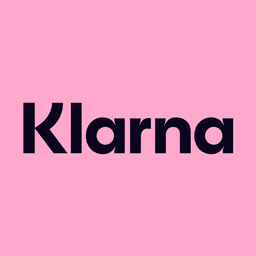How Klarna’s AI Chatbot Replaced 700 Agents and Boosted Profits by $40M


Business Description
Table of Contents
Navigate through the case study sections
Executive Summary
Case Study Content
Background
In early 2024, Klarna faced a rapid rise in support ticket volume while striving to keep customer wait times low. With an average resolution time of 11 minutes, the company employed roughly 700 full-time agents just to handle inquiries about orders, refunds, and payment plans. Management saw an opportunity: could artificial intelligence automate this workflow and drive down costs without sacrificing quality?
The Challenges
Customer expectations are higher than ever, especially for “buy now, pay later” platforms. Slow replies risk cart abandonment and poor reviews. At the same time, agent headcount drove a large fixed cost. Klarna’s leadership team identified two main issues: lengthy ticket resolution times and a large, inflexible support staff budget. They needed a solution that tackled both quickly.
AI-Driven Ticketing Solution
Klarna partnered with an AI vendor to build a custom chatbot integrated into its existing ticketing system. The bot uses natural language processing to read incoming messages, match them to known issues, and supply accurate, branded responses. If a request fell outside predefined scenarios, it escalated to a human with context already collected, cutting manual triage time.
Results and Metrics
Within three months of launch, the AI chatbot handled over 80% of routine tickets. Average resolution time dropped from 11 minutes to just 2 minutes, improving customer satisfaction scores. More striking, Klarna reduced its support headcount by approximately 700 roles, freeing up $40 million annually to reinvest in R&D, marketing, and new market expansion.
Strategic Impact
Klarna funneled part of its cost savings into advanced A/B testing for marketing campaigns. One test on promotional email subject lines, powered by AI analysis, increased click-through rates by 18%. This created a positive feedback loop: efficiency gains funded growth, which improved revenue per user, making further customer acquisition more cost-effective.
Key Lessons for Growth
AI isn’t a magic bullet but a multiplier. Klarna’s approach balanced automation with clear escalation paths, ensuring no query went unresolved. They also prioritized reinvestment of savings into high-impact areas, marketing, R&D, and customer acquisition, which kept momentum high and competitors on their heels.
Conclusion
Klarna’s AI chatbot rollout shows that even mature fintech brands can still find dramatic efficiency gains. By replacing 700 full-time agents, slashing resolution times, and unlocking $40 million in profit, Klarna isn’t just improving operations, it’s funding its next era of growth.
Key Takeaways
- 1Klarna’s chatbot cut average ticket resolution from 11 minutes to just 2 minutes, an 82% improvement in speed and customer satisfaction.
- 2Replacing around 700 full-time customer support agents with AI freed up an estimated $40 million in annual profit for reinvestment.
- 3Savings were reinvested into R&D, marketing, and customer acquisition, creating a positive cycle of efficiency and growth.
- 4AI-powered A/B testing boosted email click-through rates by 18%, demonstrating the broader impact of data-driven decisions.
- 5Balancing automation with clear human escalation paths kept service quality high while reducing fixed costs.
- 6SMBs can adopt similar AI tools for standardized support, while enterprises should pursue custom integrations for unique workflows.
Key Facts
Tools & Technologies Used
Premium Content Locked
Subscribe to access the tools and technologies used in this case study.
Unlock NowHow to Replicate This Success
Premium Content Locked
Subscribe to access the step-by-step replication guide for this case study.
Unlock NowInterested in Being Featured?
Share your success story with our community of entrepreneurs.
Explore More Case Studies
Discover other inspiring business success stories

From Steady SaaS to Successful Exit: Pulse CMS Sells for $55,000
Pulse CMS, a subscription SaaS for website management, grew organically for 11 years, without paid ads or SEO. Handled b...
Pulse CMS

How Luisa Zhou Built a $106K Coaching Business While Working Full-Time
Luisa Zhou was once a corporate professional at a New York startup, enjoying stability but craving freedom and purpose. ...
Luisa Zhou Coaching

How One Dog Lover Turned an Affiliate Blog into a $4M E-commerce Brand
WeLoveDoodles started as Garrett’s informational site about doodle dogs in 2018. After attracting half a million monthly...
WeLoveDoodles
